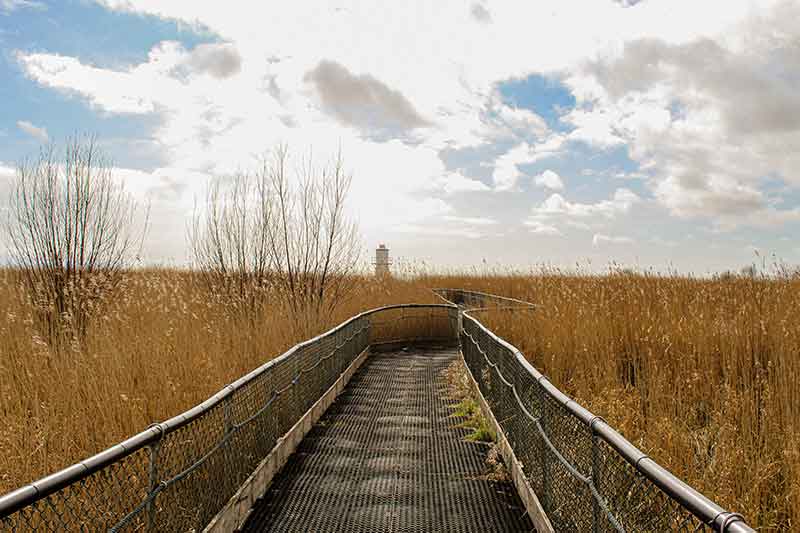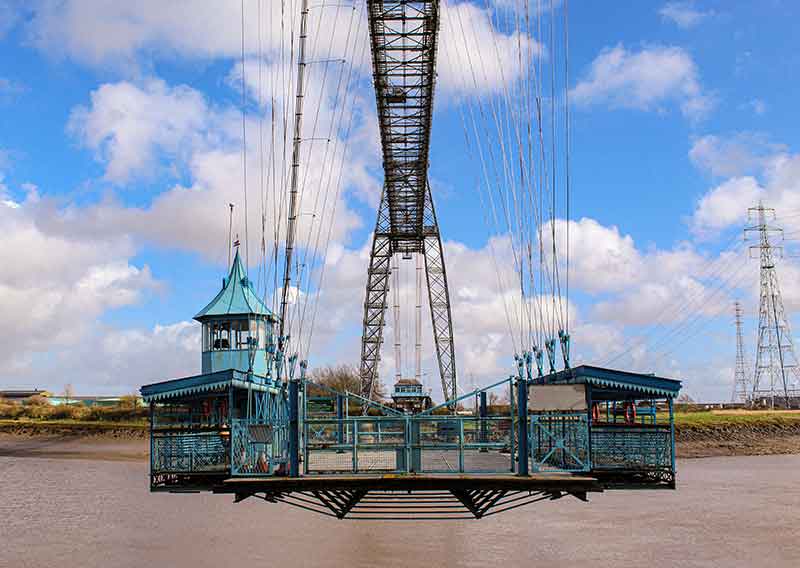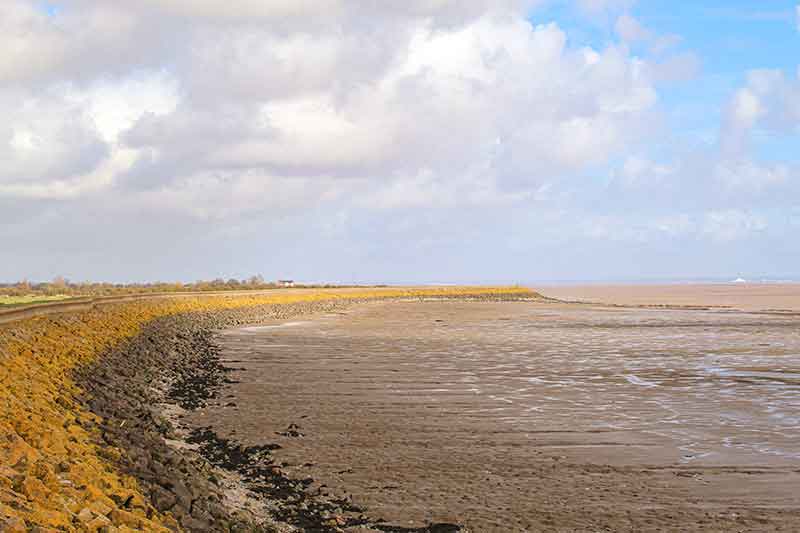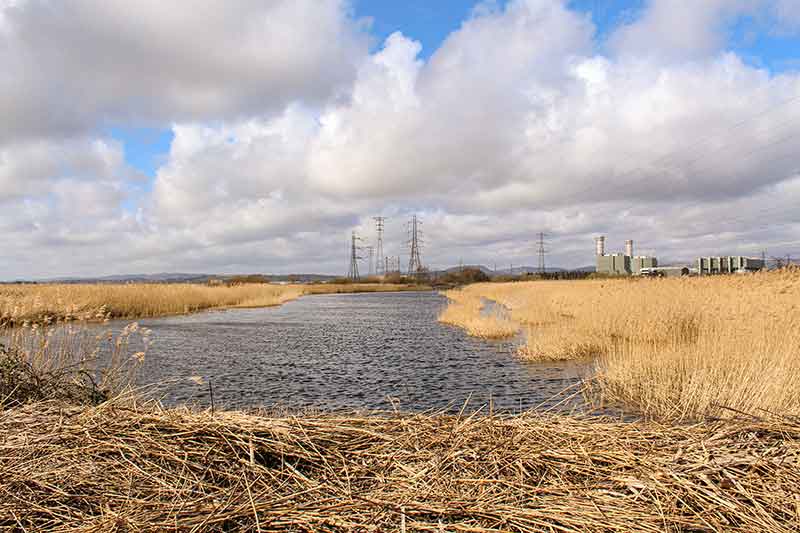Savouring My Square Mile: How a global pandemic helped me appreciate my Welshness 23.09.20

Georgia Buchanan is inspired by Planet’s ‘Retracing Wales’ series to explore both the stunning coastline landscape around Newport, and her border identity.
Creative responses by masters students from the School of Journalism, Media and Culture (JOMEC) at Cardiff University, commissioned and published as part of our sponsorship partnership with JOMEC


Newport Wetlands and Nature Reserve © Georgia Buchanan
We’ve reached September, a milestone that seemed so far away back in March. Six months ago, lockdown confined us to our milltir sgwâr, encouraging us to slow down and enjoy the world on our carreg drws.
My milltir sgwâr is in Newport, south Wales. I was born in Newport almost twenty-five years ago and have lived here my entire life. With the help of lockdown, the exploration of the world immediately beyond my carreg drws has not only made me feel more connected with nature but has also made me more appreciative of my little city in Wales, and has kindled intense feelings of Welshness within my identity.
For the first time in my life, I’ve paid attention to nature’s life cycle and watched Mother Wales transform with the seasons. We went into lockdown back in March when our landscape blossomed into fresh, dewy rolls of luscious green and our trees budded and transformed into parasols. Our landscape grew richer as Summer came and went… as it always does.
But our world is changing again — golden hues of warm light shine on our landscape as rich, velvety greens turn to warm, coppery browns and fresh, new life turns crisp and brittle.
As local lockdowns infringe upon us (at the time of writing, Newport is discussed as the next local authority to potentially face restrictions), I wanted to go further than my milltir sgwâr and experience the beauty that Newport’s twenty-three mile stretch of the Wales Coast Path holds, and I’ve done exactly that.
I decided to walk the coastal path from west to east and started at Peterstone. The path is bookended with two beautiful churches. The first is St Peter’s which dates back to the fifteenth century — this magical building is no longer a church but a privately owned home that sits proudly on the sea wall.
While strolling the path I’m met with two equally beautiful scenes — turn to your left and you see luxuriant green landscapes, hear chirping birds and teeming insect life, then turn to your right and you’re overlooking bodies of swaying water with distant views of Somerset.
As I look over at England in the distance, I feel my Welshness come alive.
I have a border identity. Due to my geographical closeness to England coupled with my inability to speak the Welsh language, and my unintentional ignorance surrounding the history of the country I’m from — I often don’t feel very ‘Welsh’. However, I’m beginning to understand that my physical proximity to the border shouldn’t determine how ‘Welsh’ I feel and connecting with the Welsh landscape has helped my identity crisis.
As I continue down the path and stray away from the sea wall, I am met with views and sounds that I am fondly familiar with — a forest of pylons and the mundane hum of inner-city traffic.
The south Wales stretch of the path is the most densely populated and industrialised section of the Wales Coast Path and the centre section of the walk brought this home. As you approach the heart of Newport you instantly notice the change in scenery — the verdant countryside quickly turns into a grey cityscape.

Newport Transporter Bridge © Georgia Buchanan
Sitting proudly in the centre of the industrial landscape is a 241.5ft tall bridge. The Newport Transporter Bridge is one of few remaining operating transporter bridges in the UK, and the only one in Wales. Built in 1906 this metal-limbed construction is a symbol of Newport’s industrial history.
I needed to cross the River Usk and the handsome blue gondola that sits in the middle of the transporter bridge assisted my journey.
I reach the east coast section of the path and see the second lighthouse of my journey. The East Usk Lighthouse sits opposite the West Usk Lighthouse and both guard the bottleneck of the River Usk. This beautiful little lighthouse is situated within the grounds of Newport’s Wetlands and Nature Reserve and is disguised amongst endless crowds of reeds which rustle and sing in the wind.
The trail continues to meander inland and I walk further away from the glistening water. I can feel the warmth of the sun on my skin as I continue to weave myself into the glorious landscapes ahead. I occasionally catch glimpses of the Severn Estuary reminding me that Goldcliff Sea Wall is near. A huge stretch of rocks guards the land against the sea, banded with a glistening gold hue — they get their famous colour from a mineral called mica. A sight I’ve never seen before.
There’s no feeling quite like being on the edge of land, with nothing but shades of blue ebbing ahead of you.

Goldcliff Sea Wall © Georgia Buchanan
I am nearing the end of my journey. The remaining section of the east path is bound to the sea wall which makes for an easy stroll. I venture away from the path to explore Redwick, a medieval village that dates back to the eleventh century. Its layout has hardly changed and is the best-preserved village on the Gwent Levels.
The village feels deserted, and the warm September air is still. I wander around and observe the cobbled buildings and ancient church, St Thomas the Apostle. I sit on a nearby bench and ponder my thoughts; exploring this stretch of the coastal path and immersing myself in nature has cemented my love for Wales while making me feel sure of my Welshness.
My legs may be sore, but I feel victorious — I’ve wandered outside my milltir sgwâr and what an adventure it’s been.

Newport Wetlands and Nature Reserve © Georgia Buchanan


About the author
Georgia Buchanan is a freelance journalist from south Wales who’s passionate about sustainable fashion, women’s health and lifestyle journalism. Twitter: @_georgbuchanan
Further articles from Planet Platform:
Faith Clarke
‘I’m not lazy like those people’: How austerity rations our compassion
Greg Taylor
Reflections on 'Welsh Keywords'
Bethany E. Williams
Flora and Fauna
Natalie Cox
Retracing Wales | Discover the Shape of a Nation